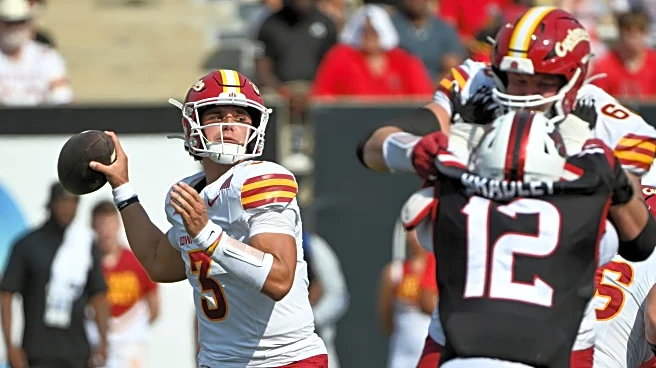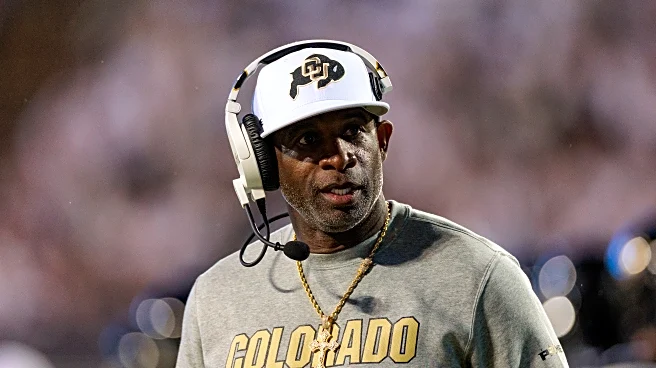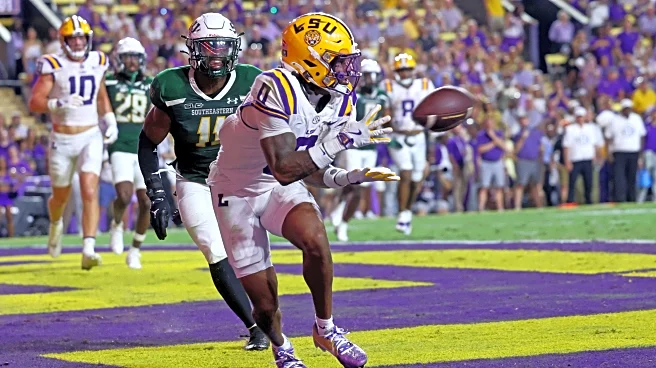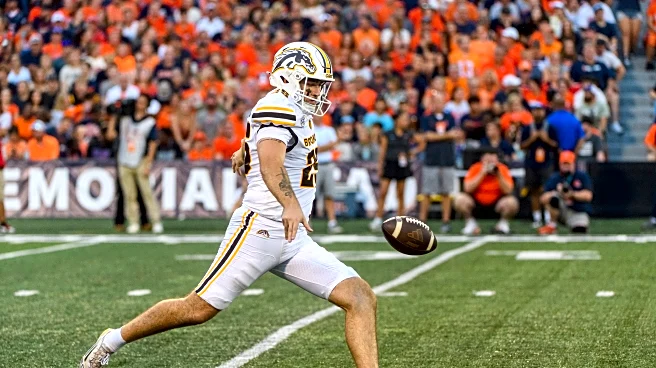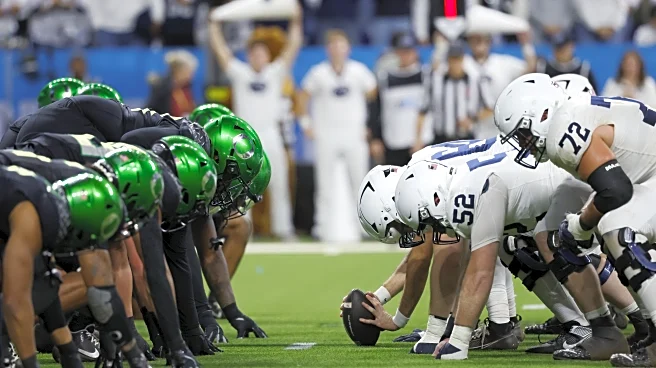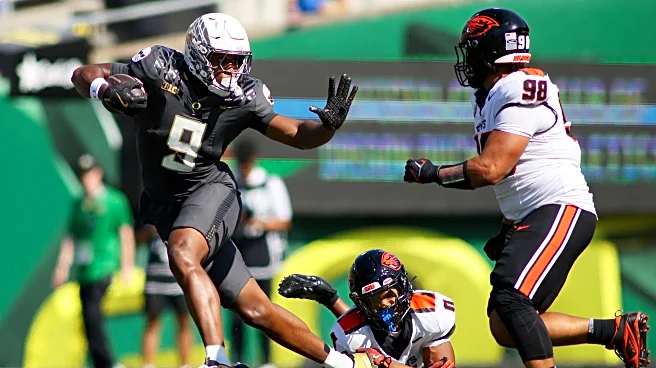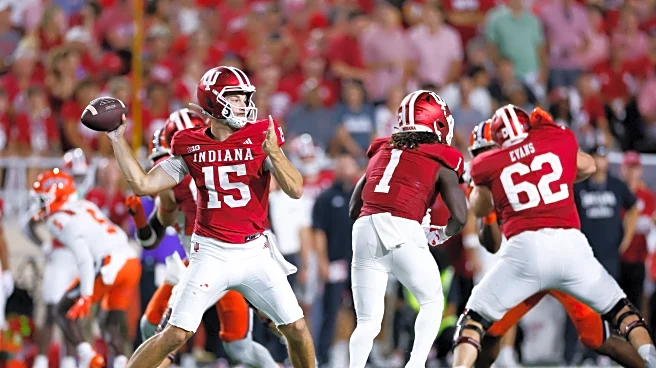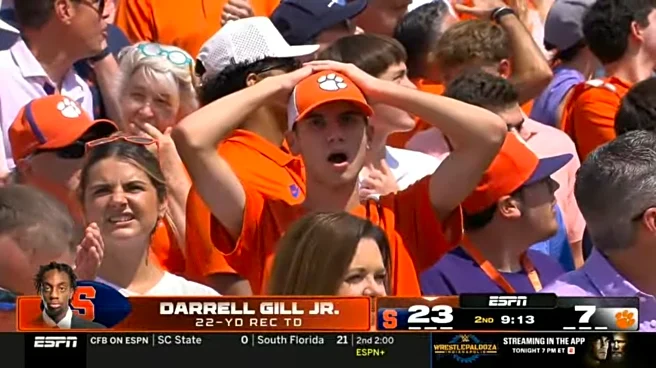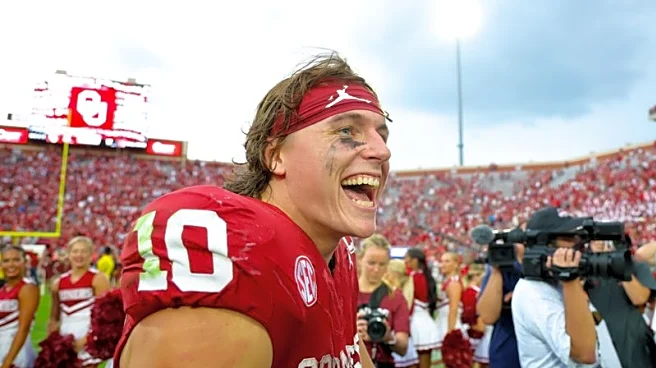What's Happening?
West Virginia Mountaineers are set to debut new throwback uniforms in their upcoming Big 12 game against the Utah Utes. The uniforms, inspired by designs from 1965, feature a muted 'old gold' hue replacing the traditional yellow, and light blue accents on the helmets. The light blue outlines the state of West Virginia with 'WVU' superimposed in a bold font. This vintage look aims to boost team spirit following a recent loss to the Kansas Jayhawks. Other teams, including Boise State and Oregon, are also showcasing unique uniforms this week, with Boise State's helmets hand-painted to feature local landmarks and Oregon's jerseys incorporating a mummified duck motif for their game against Penn State.
Why It's Important?
The introduction of throwback uniforms by West Virginia highlights the role of tradition and nostalgia in college sports, potentially enhancing team morale and fan engagement. Uniforms are a significant aspect of college football culture, often used to commemorate historical moments or boost team identity. This move could influence other teams to explore similar strategies, impacting merchandise sales and fan loyalty. Additionally, the focus on unique uniforms across various teams underscores the competitive nature of college football, where visual identity can play a crucial role in team branding and fan support.
What's Next?
West Virginia will face the Utah Utes in their first Big 12 game of the season, with the new uniforms potentially serving as a morale booster. The outcome of this game could set the tone for the rest of their season. Other teams, like Boise State and Oregon, will also be showcasing their unique uniforms, which may lead to increased media attention and fan interest. The success of these uniform strategies could prompt other schools to adopt similar approaches, influencing future designs and marketing strategies in college sports.
Beyond the Headlines
The use of throwback uniforms by West Virginia and other teams reflects a broader trend in sports where historical and cultural elements are leveraged to enhance team identity and fan connection. This approach not only celebrates past achievements but also fosters a sense of continuity and tradition. As teams increasingly focus on unique visual elements, the intersection of sports, culture, and marketing becomes more pronounced, potentially influencing how teams engage with their communities and fans.

